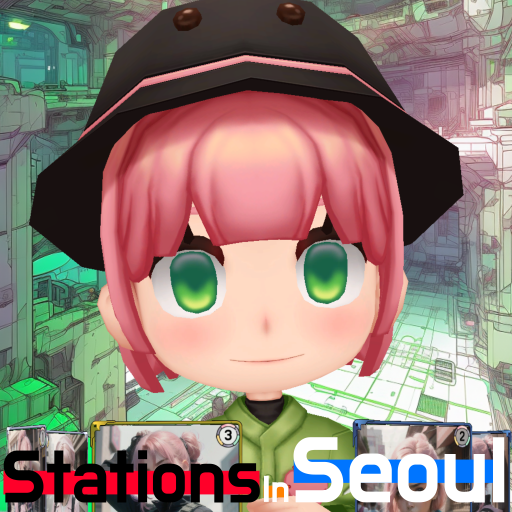목적: 좀 더 제대로 영어의 의미를 알고 명상을 하자원문
Moment to Moment
When it comes to meditation, there are many that are attracted to complicated theories and techniques, or to the mystical traditions from where they came.
But to live life moment to moment is enough.
So, this is a really tricky one for the mind to believe or understand.
I think especially when the mind is very busy, or we’re overwhelmed by challenging emotions, we may think that by focusing on the breath or a visualization is perhaps not quite enough.
We need something more.
The mind is really busy, or the emotions are really overwhelming.
But the truth is, it doesn’t really matter what the technique is, as long as the intention is to be present with an open mind, kind heart, then that is enough.
It might be something as simple as just watching or feeling the breath rise and fall, just following that movement, that’s enough.
The training is more to do with noticing when the mind’s wandered off, being conscious of that, aware of that.
In that moment, acknowledging it and letting it go.
If we can do that, then even the simplest of techniques can help us to experience the true benefits of practice.
So, just take a moment now to get comfortable.
We’re going to begin with the eyes open, just taking a big, deep breath, breathing in through the nose and out through the mouth.
And as you breathe out, just gently closing the eyes.
And in closing the eyes, becoming more aware of the physical senses.
Noticing the sensation of weight, of contact, just pressing down.
Noticing the different sounds around you.
So, just settling in to that space, and noticing how the body feels.
Whether there’s a sense of heaviness or lightness in the body.
Now, as you sit there, as you pause for a moment, just allow your attention to rest on the breath, that rising and falling sensation.
Doesn’t matter where you feel the movement.
Just following that rising and falling sensation.
You can place your hand on your stomach if you find it easier.
So, every time the mind wanders off, realizing it’s wandered and just gently bringing the attention back again to that rising and falling sensation.
And then just bringing the attention back now into the body, that feeling of contact, feeling of weight, the body pressing down.
Just starting to notice the space around you again, any sounds, any smells.
And then when you feel ready, in your own time, just gently opening the eyes again.
Many are attracted to the theories and techniques of meditation, or its mystical traditions. But to live life, moment to moment, is enough.
번역
순간 순간을 살아가기
명상에 관심을 가지는 사람들 중에서는 복잡한 이론과 기술이나 그것이 유래한 신비로운 전통에 매료되는 이들이 많습니다.
그러나 명상은 순간 순간을 그저 살아가는 것만으로도 충분합니다.
이것은 마음속으로 믿거나 이해하기가 상당히 까다로운 문제입니다.
특히 마음이 정신없이 바쁘거나 복잡한 감정에 압도되어 있는 상태에서는 호흡에 집중하거나 시각화를 하는 것만으로는 충분하지 않다고 생각할 수도 있습니다.
더 필요한 것이 있다고 생각하게 됩니다.
마음이 정말로 바쁘거나 감정이 엄청난 압박을 주는 경우입니다.
하지만 사실은 기술이 무엇이든 상관 없이, 마음을 열고 친절한 마음으로 현재에 충실하려는 의도만 있다면 충분합니다.
숨이 들어오고 나가는 것을 관찰하거나 느끼는 것처럼 간단한 것일지라도 충분합니다.
훈련의 핵심은 마음이 어디로 떠났는지 알아차리고, 그것을 의식하고 인식하는 것입니다.
그 순간에 인정하고 놓아 주는 것입니다.
그렇게 할 수 있다면, 가장 단순한 기술조차도 우리에게 진정한 명상 연습의 혜택을 누릴 수 있게 도와줄 것입니다.
자 이제 편안한 자세를 취하세요.
눈을 뜨고 시작할 겁니다. 코로 깊게 숨을 들이마시고 입으로 숨을 내쉬며 크게 숨을 쉬어 보세요.
숨을 내쉬면서 천천히 눈을 감으세요.
눈을 감음으로써 느껴지는 물리적 감각에 더욱 집중하세요.
몸의 무게와 접촉감을 느끼며 몸이 눌러앉는 느낌을 인식하세요.
주변의 다양한 소리를 들어보세요.
그렇게 공간에 둘러앉으면서 몸이 어떻게 느껴지는지 알아보세요.
몸이 무겁게 느껴지는지 가볍게 느껴지는지 확인하세요.
이제 그 자리에 앉은 상태로, 잠시 멈춘 상태로, 숨이 들어오고 나가는 그 상승하고 하강하는 느낌에 집중하세요.
움직임을 느끼는 곳이 어디든 상관 없습니다.
그저 상승하고 하강하는 그 느낌을 따라가세요.
만약 더 쉽게 느끼고 싶다면 배 위에 손을 올려두어도 좋습니다.
마음이 흩어질 때마다 그것을 인식하고 다시 상승하고 하강하는 느낌으로 주의를 돌려주세요.
그리고 다시 몸 안으로 주의를 돌려, 무언가에 접촉되어 있는 감각과 무게감, 몸이 눌러앉는 느낌을 느끼세요.
다시 주변 공간을 인식하며, 주변의 소리와 냄새를 느껴보세요.
준비가 됐다고 느낄 때, 여유롭게 시간을 갖고 천천히 눈을 떠보세요.
많은 사람들이 명상의 이론과 기술, 또는 신비로운 전통에 매료되곤 합니다. 그러나 명상은 순간 순간을 그저 살아가는 것만으로도 충분합니다.
'Meditation' 카테고리의 다른 글
| 자존감을 올리기 위한 훈련 (2) | 2023.04.24 |
|---|---|
| [명상: 헤드스페이스(Headspace)] 목표는 인식(Awareness is the Goal) (0) | 2023.04.08 |
| [명상: 헤드스페이스(Headspace)] 호흡(The Breath) (0) | 2023.04.07 |
| [명상: 헤드스페이스(Headspace)] 마음을 알기(Knowing the mind) (0) | 2023.04.06 |
| [명상: 헤드스페이스(Headspace)] 우리 자신을 알기(Knowing Ourselves) (0) | 2023.04.05 |





